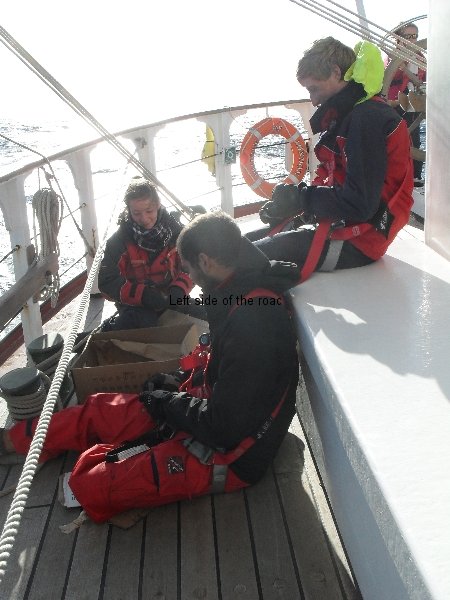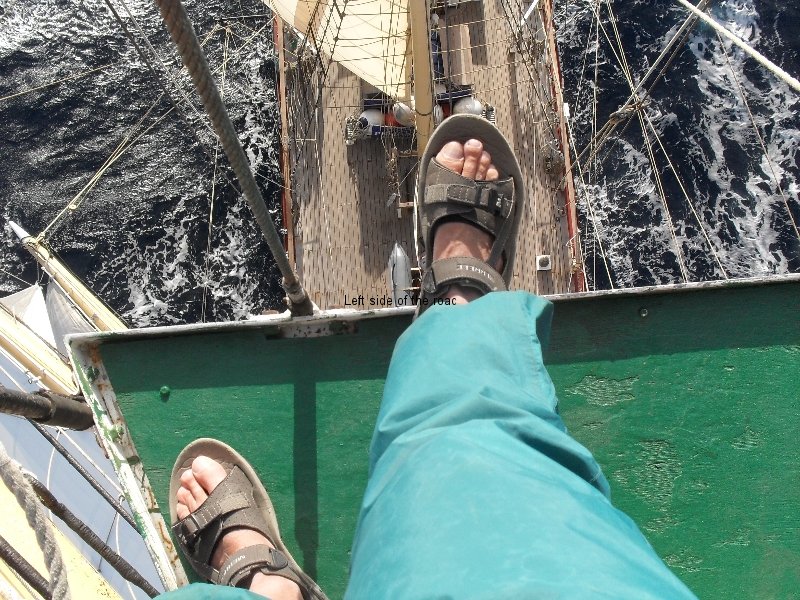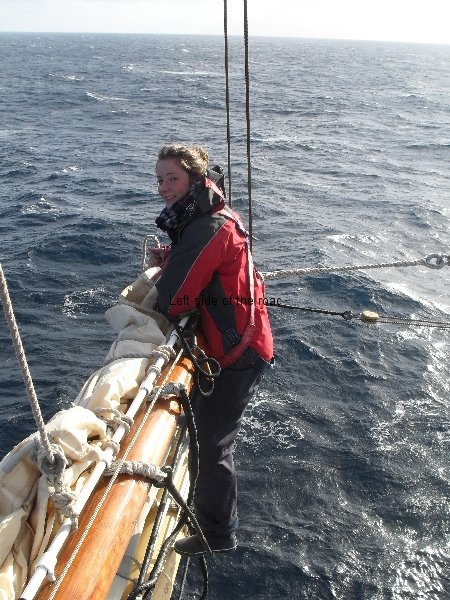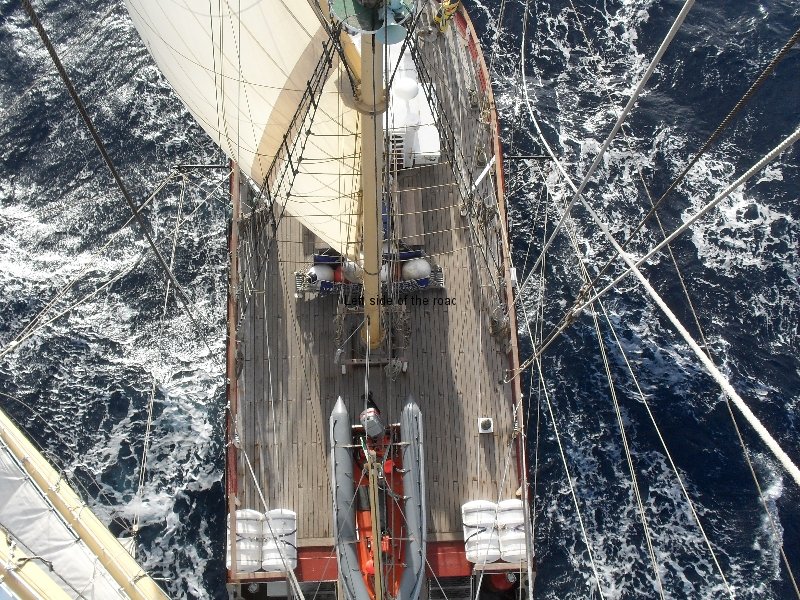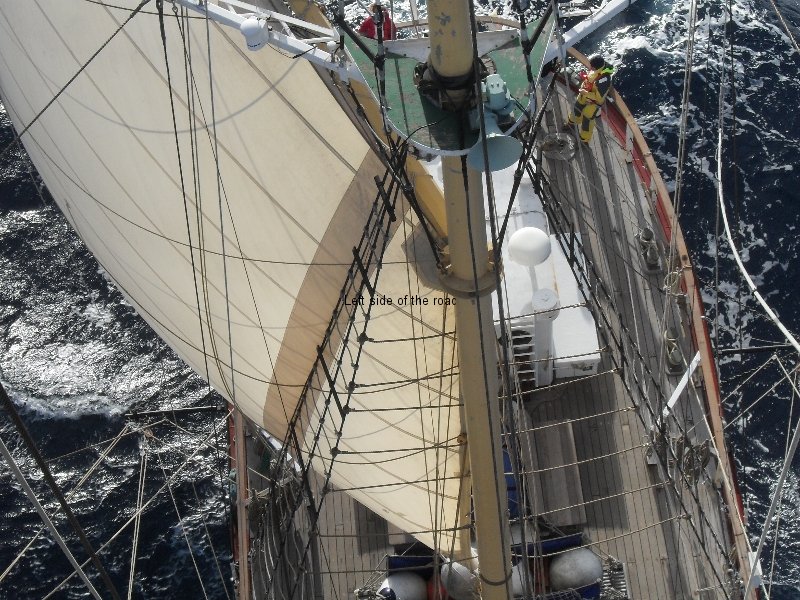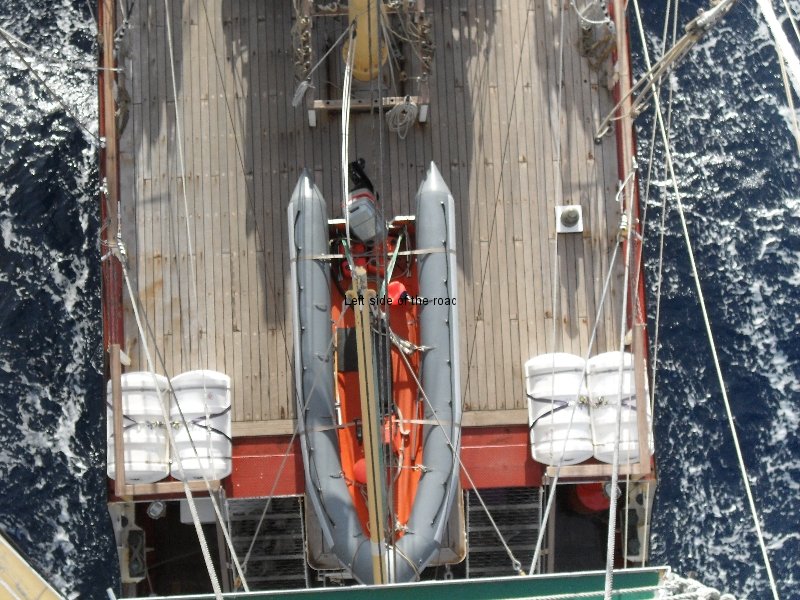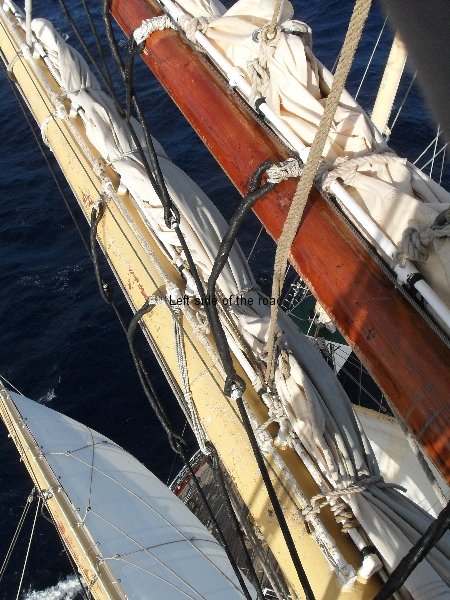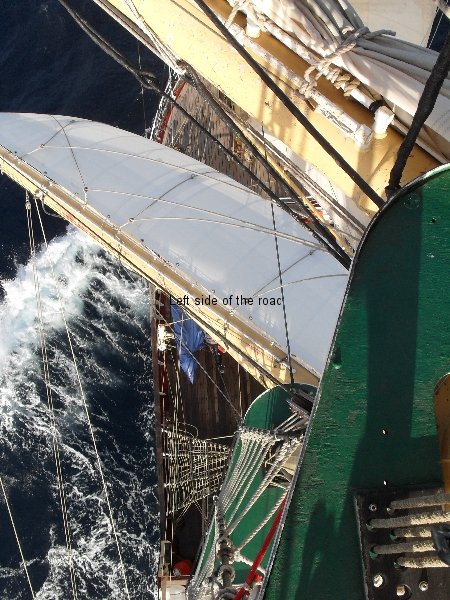
Tall ship masts at night
More on sailing on a tall ship
There’s probably no such thing as a typical night at sea, especially on a sailing tall ship, but here is an attempt to re-create the atmosphere on one night at the beginning of February, on the stretch from the Caribbean islands to Bermuda.
The southern end of a storm that had been dumping snow (and causing chaos) on the eastern seaboard of the US was to affect us for the best part of 36 hours, the first 24 being the worse easing slightly after that. This meant rough seas, a big swell (up to 4 metres at one time), squally showers (that were sometimes short and intense, other times prolonged) and battling against winds that wanted to push us south as we wanted to go north.
As is always the case the worse weather was to hit us during the night, when you can’t see what is happening and people are already weakened due to lack of sleep because of the heavy seas. (But this has to put into perspective. We weren’t battling for 40 days to get around Cape Horn as did the Bounty – before the famous mutiny – and we had all the amenities which the original sailing ships lacked, things like an engine and electricity to make life more bearable.)
Sailing on a tall ship at night is different in so many ways from during the daytime. Heavy seas are ‘doable’ when you can see what is happening. The same lurch forward at night can throw you into the dark unknown (where chances of survival are nil). Your attitude towards distance changes, psychologically. You can sit or stand at the same place at night as in the day but the distance between you and the space before you are thrown into the abyss of the raging sea reduces with the light levels.
The structure of the ship also changes. Heavy seas meant that although we were travelling on the ship’s engine (there is a deadline for getting to Bermuda) there was still some sail. I’ve been told that this helps to increase the stability of the vessel by keeping a higher centre of gravity. The few sails that are up, the spanker at the stern and the gaff and the staysail at the bow, increase the impression of height of the skeletal main mast, which reaches 108 feet from the deck below. The dark outline of these bare bones becomes more impressive against a dark sky (this was the night of the New Moon so all we had was starlight).
A sailing ship under power tends to plough into the sea (so it seems) and with the heavy swell there was plenty of that during the night. This, in its own way, creates a fascinating show. All vessels at night/under power have to show a port (red) and starboard (green) light and as the bow dives deep into the water (not what is desired as it brings the progress of the vessel to a halt) the foam takes on a red tint on one side and an eerie green on the other. For in the darkness all that can be seen is the foam that is created by the presence of the ship, all the white horses further out being effectively invisible. Lights from the portholes on the main deck adding their own particular sense of the unreal if there are still people up and about – although that night people out of their cabins not ‘on watch’ were few and far between, either trying to sleep or trying not to throw up.
This ship is never quiet, something I didn’t think about before. As we are under power there is the obvious noise of the engine but what is even more invasive is the noise of the ventilation system that attempts to bring the temperature of the engine room down to something that is slightly less than tropical. The engine being at the stern of the ship so is the ventilation system and the outlet is through the structure of the wheelhouse, which is where you stand on watch.
But the sound that is very reminiscent of the old sailing ships is that of the ship’s bell. This is located in front of the wheelhouse and the only time it sounds is when the ship’s bow ploughs into the sea. Not a warning, it comes after the event, but a mournful sound as the structure resents such mistreatment. Too many tolls of the bell signify an uncomfortable day/night and not what you want to hear. Here the question is not for whom but why the bell tolls.
The combination of bad weather, a dark night and lack of sleep (or at best disturbed sleep patterns) lead to hallucinations for those looking out at sea. All that can be really made out in the darkness are anomalies but after a few hours of staring out and seeing nothing but the darkness the brain starts to see what isn’t there, or misinterprets what is. Phantom ships appear and then just as quickly disappear. Added to that is the fact of there being so little shipping along this particular part of the Atlantic, not really being on any of the main shipping lines. Soon you start to doubt your own eyes and question if a light is really there. On this ‘typical’ night only one ship of any description came into view.
But even though the night was windy and the weather generally erratic (with a weather front passing through towards the early hours) there was still an opportunity for observing the night sky. This was the night of the New Moon and for the short time it was in view, just after sunset, the lack of light pollution meant that as well as the crescent of light being reflected from the sun the whole of the moon’s shape could clearly be seen.
If I don’t take this opportunity to get to know some of the constellations of the northern hemisphere I won’t get a better. One of the problems is that there are too many stars out there. In some ways the major constellations that are visible even in light polluted areas are easier to make out as all the less bright stars are effectively invisible. But the hours of looking out into the darkness has already provided an impression of the relative position of the major star structures. In this there has been one surprise and that is the opportunity to see, in full, the Southern Cross. As the days go by, no doubt, it will fall from view but at the moment it’s visible in the latter part of the night.
Another thing you learn NOT to do on a sailing ship like this is to move, or to move unnecessarily. Standing still in any sea conditions is doable. Perhaps not easy but you won’t fall over. Start to move and you walk as if you were a drunk baby taking its first steps. And ships are hard and if you are going to hit anything it will always be the hardest corner causing the most pain. Within a couple of days you find bruises which would normally be impossible to induce on land. You also learn NOT to forget anything if you are on watch. No ‘senior moments’ here of going to a place and not remembering why. Anyone with experience on a sailing ship, with no stabilisation whatsoever, is that the minimum of walking is the aim. This is especially so in the dark of a moonless night.
The one thing for certain is that there will be plenty of time to do all these things. Whatever work there might be on a sailing ship it tends to be needed at certain times, with urgency being part of the equation if bad weather arrives unexpectedly. The rest of the time is a matter of waiting for going on watch or sleeping. The expected length of this voyage increases all the time and I have no idea when we will reach the UK so projects will have to be devised to fill the time to come.


